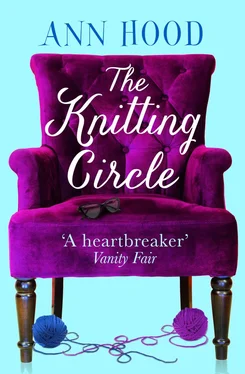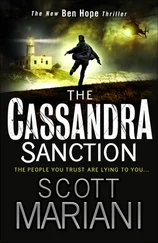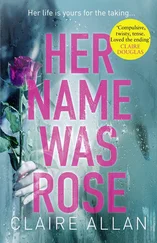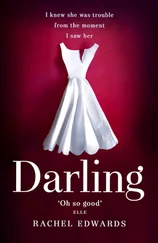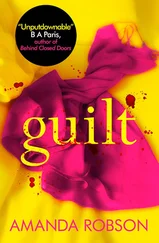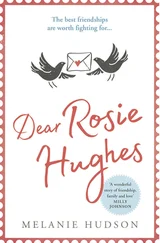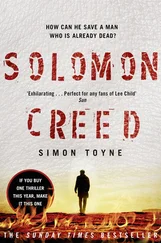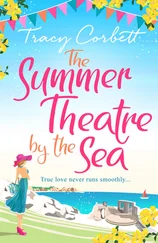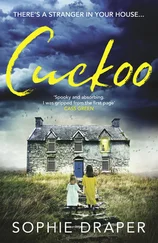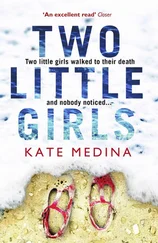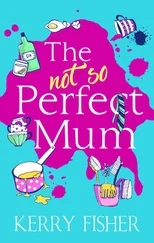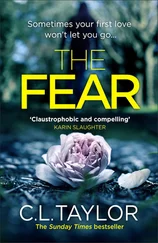Lisa could only nod and stare at all the tiny hats everywhere.
Mary lost her virginity in her bedroom while her mother sat downstairs knitting hats for babies she did not know. Every afternoon that spring, Mary and her boyfriend Billy had sex on her pink-and-white-striped sheets, Billy turning her every way he could, entering her from every direction, kissing every part of her, while her mother sat, oblivious, and knit those stupid hats.
Sometimes Mary imagined that she could see through the hardwood floor, past the ceiling, into the living room where her mother sat surrounded by yarn. Maybe, Mary thought, her mother was only capable of loving one thing at a time. There had been her father at some point, she supposed. And then the drinking. And now this, knitting. But Mary couldn’t help wondering why she had never been her mother’s obsession. Nothing Mary had ever done—playing Dorothy in the third-grade production of The Wizard of Oz , getting straight A’s her entire sophomore year, winning her school’s top literary prize—nothing, had ever earned her more than halfhearted praise from her mother. “You’ll go far,” her mother liked to say. She’d make her toads-in-the-hole for breakfast and call it a celebration.
While her parents watched The Fugitive , Mary took Billy upstairs to her room. As she unbuttoned the five buttons on his jeans, he whispered, “I don’t know, Mary. They’re both downstairs.”
She kneeled in front of him, taking him into her mouth. From downstairs, she heard David Janssen searching for the one-armed man. Her mother would be knitting without even glancing down at her stitches. Her father would have Time magazine opened in his lap. Billy groaned and Mary yanked her head away. Already her mind was far from here, from the tiny hats and her mother’s glazed stare and her father’s impenetrable front. She could imagine her future, bright and near.
It took Mary almost the entire next morning to do the tassels, but when she finished she decided to go to Big Alice’s and buy more yarn. The idea that these scarves were becoming like those long-ago infant hats her mother made occurred to her. But she was different, she told herself. She would give them as Christmas gifts. Mary earmarked the striped one for Dylan’s niece, Ali, who went to college in Vermont and certainly needed scarves. The first one she would keep for herself; Alice had said you should keep the first thing you knit.
Satisfied with her practicality, she entered the store. The smell of wool comforted her, the way the old-book-and-furniture-polish smell of libraries used to. Mary could still remember how the ball scene in Anna Karenina had helped calm her after one of her mother’s tirades; how Marjorie Morningstar’s kiss under the lilacs had let her forget her own broken heart one summer; how Miss Marple used to make her smile.
Now here she stood in a knitting store, and that same sense of safety, of peace, filled her. The store was crowded, but Mary spotted Scarlet’s red hair across the room. She had on a green shawl with elaborate embroidery and long fringe wrapped around her, and beneath it she wore a startling fuchsia turtleneck.
Scarlet turned, her arms filled with a dozen or more skeins of fat loopy yarn in shades of beige and rust and white. Her eyes crinkled at the sight of Mary.
“Told you,” Scarlet said.
“I admit it,” Mary laughed.
Scarlet dropped her yarn on the counter and made her way over to Mary. “You need to learn how to purl and you look like you need a cup of coffee.”
“Coffee, yes,” Mary said. “But purling still seems … unnecessary.” Already she was eyeing a variegated yarn in moss green with gold and red and orange pom-poms woven throughout. It made her think of autumn. Hesitantly, she lifted a skein.
“That yarn is fun to work with. It makes a great child’s sweater,” Scarlet said, pointing to a small sample hanging up.
Mary swallowed hard and managed to shake her head.
“It also makes a great scarf,” Scarlet said easily. “But not for purling. Let’s pick out some multicolored yarn and get us that coffee. I make a café au lait that, if you close your eyes, will make you think you’re in France.”
Relieved, Mary followed Scarlet’s soft green shawl through the crowded store, toward her next lesson.
Mary sat at the counter that separated Scarlet’s living area from the kitchen in her loft in an old jewelry factory. The walls were brick and the ceiling had steel beams across it. Below the wall of windows city traffic inched toward the highway.
Scarlet handed Mary a yellow ceramic bowl of café au lait. “Let’s sit on the sofa where the light’s better,” she said.
Mary’s yarn was pink and yellow and blue. A funny tangle of Stella’s favorite colors, she realized as she watched Scarlet cast on for her and the colors revealed themselves.
“Knit two stitches,” Scarlet said.
She smelled of sugar and the sour tang of yeast. Up close like this, Mary saw pale lines etched at the corners of her mouth and eyes.
“Remember when you purl it’s tip to tip,” Scarlet said, pulling the loose yarn in front. “The tip of this needle goes here and they form an X, see?”
Scarlet purled two stitches and then turned it over to Mary. “Knit two, purl two,” she said. “It’s tedious as hell, but when you finish that scarf you’ll be an expert purler.”
Mary knit two easily, then hesitated.
“Tip to tip,” Scarlet said, picking up her own knitting.
When Mary successfully purled two stitches, Scarlet said, “I knew you could do it.”
They knit in silence, the clicking of the wooden needles the only sound except the traffic below. Scarlet’s apartment was like a slice of Provence. Everything in soft yellows and blues with splashes of red, the wooden tables rough-hewn and worn, with drips of wax from candles and rings left from wet glasses. Mary imagined exotic men here, good red wine, the smells of a daube simmering on the stove, and pungent cheese and olives on this coffee table.
“How did you end up in Providence owning a bakery?” Mary asked. “You seem like you belong somewhere entirely different.”
“Like where?”
Mary blushed. “I don’t know. France, maybe.”
Scarlet nodded but didn’t reply. She had removed the ornate shade from the table lamp to give them more light, and that bright bulb showed something in her face that Mary could not identify. A sadness, perhaps. No, Mary decided. Regret.
After a time Scarlet looked up from her knitting and right at Mary. She was using very large needles and her sweater had already begun to take shape while Mary’s scarf still seemed small and new.
“Everyone has a story, don’t they?” Scarlet said. “Mine is about bread and the sea and, you’re right, about France.”
Mary held her breath for a moment, her needles poised. Then Scarlet began to speak, and Mary exhaled, put her needles together with a soft click, and listened.
“I was always good with my hands,” Scarlet said. “Even when I was little, I liked to touch things. I used to carry a stuffed dog everywhere with me. Pal, I called him. I rubbed away the fabric on one of his ears. And I rubbed holes into all of my blankets. I loved the feel of fabric in my fingers. It brought me … not joy, exactly, but … comfort. Yes, comfort.”
Scarlet paused, lost in thought.
“The first time I baked bread,” she continued, “I knew this was something I could do for the rest of my life.”
She took a breath, then continued.
“I was a terrible student. An art major only because I liked textiles and ceramics and it didn’t require a lot of reading or tests. Mostly, I smoked pot and had sex with other art majors. The summer after I graduated from college, I needed a plan or my parents were going to make one for me. So, out of the blue, I said that I wanted to live in France. Before I knew it, everything was set. My father knew a professor in Paris, Claude Lévesque, and he arranged an au pair job for me with Claude’s family. Claude and his wife Camille had two daughters, Véronique and Bébé.”
Читать дальше
